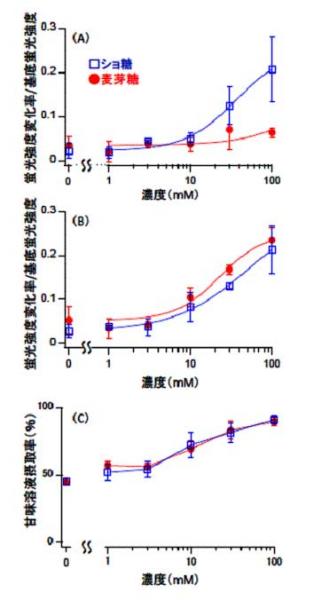



|
TOPICS BONOBO Chimpanzee "Ai" Crania photos Itani Jun'ichiro archives Open datasets for behavioral analysis Guidelines for Care and Use of Nonhuman Primates(pdf) Study material catalogue/database Guideline for field research of non-human primates 2019(pdf) Primate Genome DB 
Primate Research Institute, Kyoto University Copyright (c) |
Japanese High maltose sensitivity of sweet taste receptors in the Japanese macaque (Macaca fuscata)
Emiko Nishi, Kei Tsutsui & Hiroo Imai
Abstract
Taste sensitivity differs among animal species depending on feeding habitat. To humans, sucrose is one of the sweetest natural sugars, and this trait is expected to be similar in other primates. However, previous behavioral tests have shown that some primate species have equal preferences for maltose and sucrose. Because sweet tastes are recognized when compounds bind to the sweet taste receptor Tas1R2/Tas1R3, we evaluated the responses of human and Japanese macaque Tas1R2/Tas1R3 to various natural sugars using a heterologous expression system. Human Tas1R2/Tas1R3 showed high sensitivity to sucrose, as expected; however, Japanese macaque Tas1R2/Tas1R3 showed equally high sensitivity to maltose and sucrose. Furthermore, Japanese macaques showed equally high sensitivity to sucrose and maltose in a two-bottle behavioral experiment. These results indicate that Japanese macaques have high sensitivity to maltose, and this sensitivity is directly related to Tas1R2/Tas1R3 function. This is the first molecular biological evidence that for some primate species, sucrose is not the most preferable natural sugar, as it is for humans.  Bibliographic information
Scientific Reports 6, Article number: 39352 (2016) doi:10.1038/srep39352 URL http://www.nature.com/articles/srep39352 2016/12/19 Primate Research Institute
|